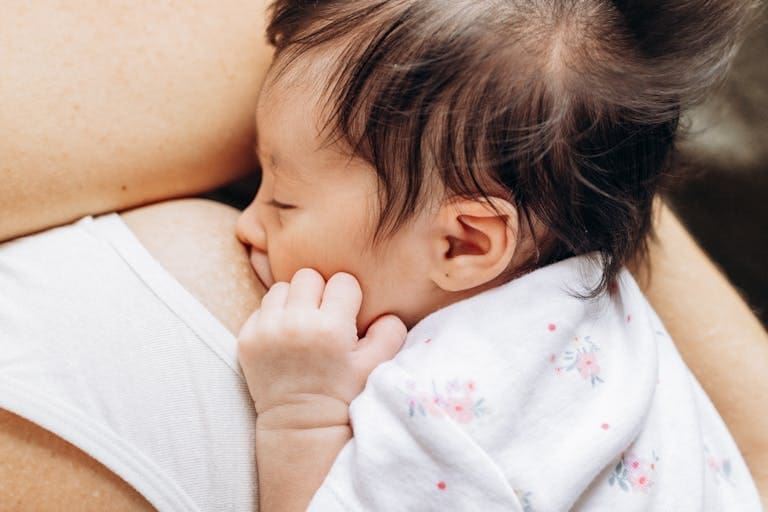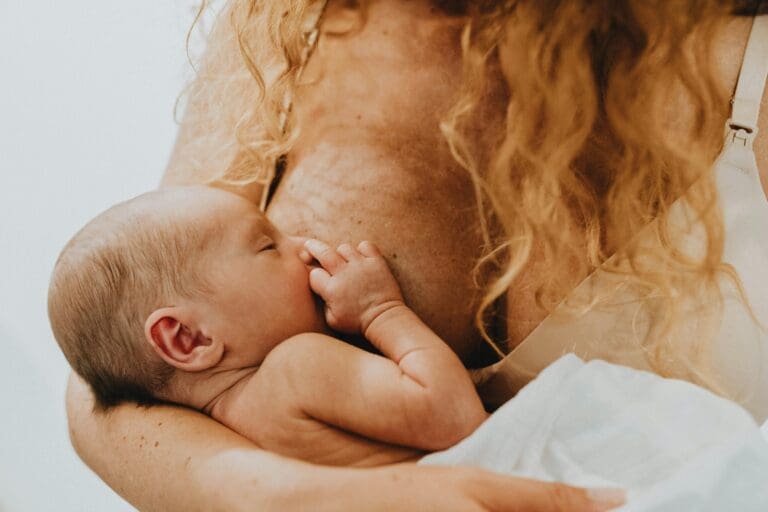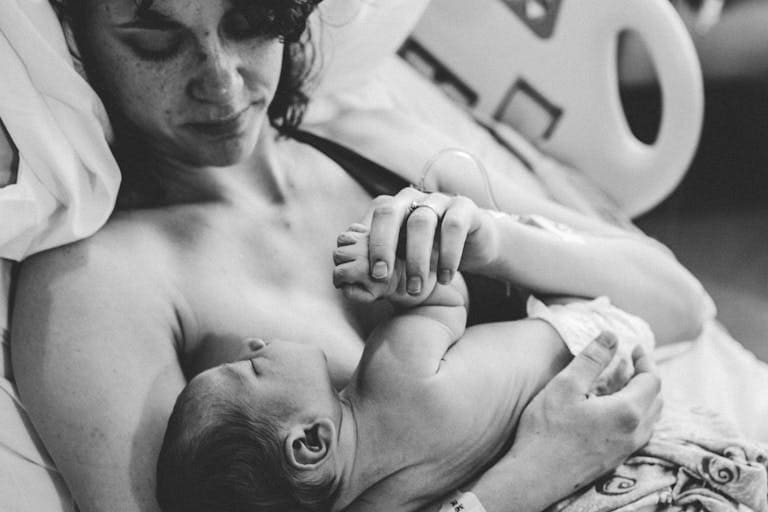Pacifiers and Breastfeeding: What You Need to Know
Pacifiers: For some parents, they’re a lifesaver. For others, they’re a source of doubt and worry, especially when breastfeeding is involved. Understanding the nuances of pacifiers and breastfeeding will help you make informed choices that support your breastfeeding goals. Many moms wonder if introducing a pacifier will confuse their baby, lead to latch problems, or interfere with milk supply.
The truth is, pacifiers can be a helpful tool when used thoughtfully. Understanding their benefits, potential drawbacks, and the right way to introduce them can help you navigate this decision with confidence.
Here’s everything you need to know about pacifiers and breastfeeding, including actionable tips to make them work for your family without compromising your breastfeeding goals.
Pacifiers and Breastfeeding: Potential Benefits
Pacifiers can have their place in a breastfeeding family when used intentionally. Here are some of the most notable benefits:
- Soothing and Comfort: Babies have a natural need to suckle for comfort beyond feeding. Pacifiers can help calm a fussy baby, offering relief for both the baby and the parent.
- Reduced SIDS Risk: Research shows that pacifiers can reduce the risk of sudden infant death syndrome (SIDS) when used during sleep. They help keep babies’ airways open and prevent deep sleep that can lead to apnea.
- Mom’s Sanity Saver: Sometimes, moms need a break—whether it’s to take a shower, prepare a meal, or simply have a moment to themselves. A pacifier can help soothe your baby when breastfeeding isn’t the immediate solution.
Key Tip: If your baby is showing hunger cues like rooting or sucking on their hands, offer the breast first. Using a pacifier to soothe hunger can interfere with your milk supply.
Pacifiers and Breastfeeding: Potential Risks
While pacifiers can be helpful, they aren’t without potential drawbacks—especially if introduced too early.
- Nipple Confusion: Some babies may struggle to transition between the pacifier and the breast, particularly if the pacifier is introduced before breastfeeding is well established. This can result in shallow latches or reduced milk intake.
- Impact on Milk Supply: Babies who rely too much on pacifiers may spend less time nursing, which can lead to a decrease in milk supply. Breastfeeding works on a supply-and-demand system, so skipped feedings or shorter nursing sessions send a signal to your body to produce less milk.
- Overuse Concerns: Using a pacifier as the default solution for fussiness can mask hunger cues or underlying issues, such as a growth spurt or latch problem.
When to Be Cautious: Most lactation experts recommend waiting until breastfeeding is well established (around 4–6 weeks) before introducing a pacifier.
Common Myths About Pacifiers (Debunked!)
There’s a lot of misinformation out there about pacifiers and breastfeeding. Let’s clear up a few common myths:
- Myth 1: Pacifiers Always Cause Nipple Confusion
- The Truth: Many babies transition seamlessly between breast, bottle, and pacifier. Nipple confusion is less about the pacifier itself and more about how and when it’s introduced.
- Myth 2: Pacifiers Should Be Avoided Entirely by Breastfeeding Moms
- The Truth: Pacifiers can be a helpful tool for breastfeeding moms when used sparingly and strategically, especially after the early weeks.
- Myth 3: Pacifiers Will Tank Your Milk Supply
- The Truth: Milk supply is influenced by how often and effectively your baby nurses. As long as your baby is feeding on demand and gaining weight appropriately, occasional pacifier use shouldn’t impact your supply.
When and How to Introduce a Pacifier
If you’ve decided that a pacifier could be helpful for your family, timing and method matter.
When to Introduce a Pacifier
- Wait until breastfeeding is well established (typically around 4–6 weeks).
- Avoid introducing a pacifier during growth spurts when your baby is nursing more frequently to boost milk supply.
How to Introduce a Pacifier
- Choose the Right Pacifier: Look for pacifiers designed for breastfed babies, which often mimic the shape of a nipple to reduce the risk of confusion.
- Offer After Feedings: Use the pacifier after nursing sessions to ensure your baby’s hunger is fully satisfied.
- Limit Use: Reserve the pacifier for specific situations, like naps, car rides, or moments of high stress, rather than using it constantly.
Pro Tip: If your baby refuses the pacifier at first, try different shapes or textures. Every baby has preferences, and finding the right fit can take a little trial and error.
Managing Pacifier Use as Your Baby Grows
Pacifier use evolves over time, and it’s important to adapt your approach as your baby’s needs change.
Newborns
- Keep pacifier use minimal and always prioritize breastfeeding.
- Use the pacifier as a tool for soothing, not a replacement for nursing.
Infants (1–6 Months)
- By this stage, pacifiers can be used more freely to comfort your baby, especially during naps or fussy periods.
- Monitor your baby’s feeding patterns to ensure pacifier use isn’t interfering with nursing.
For Older Babies (6+ Months)
- Begin gradually limiting pacifier use to avoid dependence.
- Focus on alternative soothing techniques, like rocking, singing, or offering a comfort object.
Tips for Weaning from Pacifiers
When it’s time to say goodbye to the pacifier, a gradual approach works best:
- Start Slow: Limit pacifier use to specific times, such as bedtime or naps.
- Offer Alternatives: Introduce other comfort items, like a favorite blanket or stuffed animal.
- Positive Reinforcement: Celebrate milestones, like “big kid” accomplishments, to encourage your baby to let go of the pacifier.
What’s Next?
Pacifiers don’t have to be a breastfeeding dealbreaker. When used intentionally and at the right time, they can complement your breastfeeding journey without causing confusion or supply issues. The key is to listen to your baby’s cues, prioritize nursing, and use pacifiers as a tool—not a default solution.
For more expert breastfeeding tips and guidance, explore the resources on IBCLC.com.
Do you want personalized one on one breastfeeding support? Having an IBCLC in your corner helps you answer all of your questions and feel confident. Click here to request an insurance covered consult with an IBCLC
FAQ Section
1. Do pacifiers cause nipple confusion?
Nipple confusion is possible but not guaranteed. To minimize the risk, wait until breastfeeding is well established before introducing a pacifier and ensure it’s used sparingly.
2. When can I introduce a pacifier to my breastfed baby?
Most lactation experts recommend waiting 4–6 weeks, once breastfeeding is established, and milk supply is stable.
3. How do I know if my baby is overusing a pacifier?
If your baby is missing hunger cues or nursing less frequently, it may be a sign that pacifier use is interfering with breastfeeding.
4. How do pacifiers reduce SIDS risk?
Pacifiers help keep airways open and reduce the risk of deep sleep that can lead to apnea. However, they should not replace safe sleep practices like placing your baby on their back in a crib.
5. How can I wean my baby off a pacifier?
Gradually limit pacifier use to specific times, such as bedtime, and replace it with alternative comfort items. Positive reinforcement can also help ease the transition.
More info on pacifiers and breastfeeding:
- AAP Recommendations on Pacifiers and Safe Sleep
Discover how pacifiers can help reduce the risk of SIDS and promote safe sleep practices for your baby. - ABM Statement on Pacifiers
Read the Academy of Breastfeeding Medicine’s evidence-based position on pacifiers and their role in breastfeeding. - KellyMom on Nipple Confusion
Find practical advice on preventing and addressing nipple confusion from a trusted breastfeeding resource.










